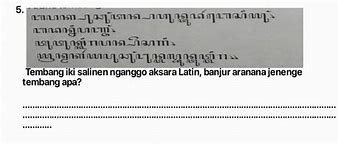
Hagia Sophia Cathedral
Hagia Sophia was built during the Eastern Roman Empire (395 – 1453) in its capital, Byzantine (Istanbul), before it was destroyed by the Roman Emperor Septimius Severus. The church was rebuilt again during the reign of the Roman Emperor Constantine II in 360, called Hagia Sophia (Holy Wisdom).
However, it was destroyed for the second time after 44 years in a rebellion by the city’s dwellers due to the erection of a silver statue of Evdokia, the Eastern Roman Emperor Arcadius’ wife, in front of the Hagia Sophia.
Hagia Sophia was rebuilt in 415 during the reign of Emperor Theodosius II, ruled after Arcadius. It was the biggest church in the Byzantine till 532 when burnt and destroyed in the “Nica Rebellion” during the reign of Justinian I.
After 39 days of the Nika Rebellion, Emperor Justinian (Justinian I) started rebuilding Hagia Sophia, which took five years to be completed in 537.
About 100 architects took part in the construction work, supervised by two senior architects. Every architect worked with 100 workers. The building was rebuilt in a short time, five years and ten months, using bricks instead of wood as stones are resistant to fire and weather conditions.
Justinian asked the governors and kings under his rule to send the finest types of marble to reconstruct Hagia Sophia again. Governors and kings hastened to send the best marble columns, iron bars, and windows, removed from temples, baths, and palaces from all over the empire and secured sending them to Istanbul.
The Persian style was followed in building hagia sufia , using the “elephant’s legs” style. Limestones and bricks were used to make the walls, while bricks made from Rhodes Island’s soil, known for their lightweight, were used to make the dome. The interior decorations were as impressive as its dome.
The opening ceremony was held on 27th December 537, with the participation of Emperor Justinian I.
Hagia Sophia could not maintain its original architectural shape due to the ongoing reconstructions and restorations against the backdrop of natural disasters and wars in the region.
The conquest of Constantinople (Istanbul now) and converting Hagia Sophia into a mosque is the most famous and prominent event in Turkish Islamic history.
After a long siege, Sultan Mehmed Fatih managed to conquer the city on 29th May 1453, headed to Aya Sofia, planted his flag there as a symbol of victory, and threw an arrow towards the dome.
That is how he recorded the conquest. He walked towards one of the temple’s corners, prostrated, and offered prayer, turning this place from a church into a mosque.
Four cylindrical-shaped minarets with Ottoman style were added, and huge paintings with the beautiful names of God, the prophet’s name (Peace be upon him), and Muslim Caliphs’ names were placed in Arabic.
According to official Turkish sources, by conquering Istanbul, Mehmed Fatih received the title of Roman Emperor; consequently, he became the owner of properties registered for the Byzantine family in accordance with this law. Hagia Sophia was registered for Sultan Mehmed Fatih and his endowment. In addition, an official copy of the title deed was issued in Turkish during the reign of the Turkish Republic.
aya sophia Cemetery
Hagia Sophia cemetery is part of the aya sophia complex. It has graves for five Ottoman Sultans who ruled the Ottoman Empire during the 16th and 17th centuries: Muhammad III, Selim II, Murad III, Ibrahim I, and Mustafa I, as well as some of their children. The cemetery has an impressive architecture ottoman style, with attractive calligraphy in Arabic.
Why is aya sophia Controversial? Is It a Church or a Mosque?
There were many calls for reconverting Hagia Sophia into a mosque and a church by Muslims and Christians, respectively. However, the Turkish government decided to turn it back into a mosque building upon Sultan Mehmed Fatih’s decision of converting it into a mosque. It is also said that Sultan Mehmed Fatih bought this church from the Romans with his own money, turned it into a mosque, and endowed it to Muslims.
During a speech on reopening aya sophia to worship as a mosque, the Turkish president, Recep Tayyip Erdogan, emphasized that the Turkish government’s decision to turn the mosque into a museum in the 1930s was a big mistake. “The decision was not only a betrayal for history but also a law violation because Hagia Sophia is not state property, rather a property for the endowment of Sultan Mehmed Fatih,” said Erdogan.
Notable elements and decorations
Originally, under Justinian's reign, the interior decorations consisted of abstract designs on marble slabs on the walls and floors as well as mosaics on the curving vaults. Of these mosaics, the two archangels Gabriel and Michael are still visible in the spandrels (corners) of the bema. There were already a few figurative decorations, as attested by the late 6th-century ekphrasis of Paul the Silentiary, the Description of Hagia Sophia. The spandrels of the gallery are faced in inlaid thin slabs (opus sectile), showing patterns and figures of flowers and birds in precisely cut pieces of white marble set against a background of black marble. In later stages, figurative mosaics were added, which were destroyed during the iconoclastic controversy (726–843). Present mosaics are from the post-iconoclastic period.
Apart from the mosaics, many figurative decorations were added during the second half of the 9th century: an image of Christ in the central dome; Eastern Orthodox saints, prophets and Church Fathers in the tympana below; historical figures connected with this church, such as Patriarch Ignatius; and some scenes from the Gospels in the galleries. Basil II let artists paint a giant six-winged seraph on each of the four pendentives.[82] The Ottomans covered their faces with golden stars,[82] but in 2009, one of them was restored to its original state.[240]
The Architectural Design of Hagia Sophia
The main building is 82 meters high, and its dome is 55.6 meters high, with a 31.7-meter diameter and 40 windows. The building is placed on four massive columns made of green marble; each is 24.3 meters high. At the end of the 20th century, four hidden tilted pillars were discovered against the upper dome, meaning they are the oldest existing pillars in the history of architecture.
The building can be entered through nine doors. It has a basilica style (ancient Roman architecture) known by the Greeks in building their religious monuments and found in Rome. Their buildings are rectangular-shaped from inside and outside, with a spacious frontal atrium, surrounded by a long porch leading to side halls, one of which is the main hall, where the colossal dome rest on.
Halls Surrounding Hagia Sophia and Doors Leading to the Main Hall
Hagia Sophia’s Main Hall Ceiling from Inside
Aya Sofya Holds the First Prayer for 86 Years
Perubahan lain yang dilakukan pada Hagia Sophia sebagai masjid adalah:
1. Pembangunan mihrab yang semula tidak ada
2. Penambahan dua lampu perak di tiap sisi mihrab yang dilakukan Kaisar Ottoman Kanuni Sultan Suleyman
3. Penambahan dua kubus marmer dari wilayah Bergama, sebuah kota di Turki, yang dilakukan Sultan Murad III
4. Pembangunan empat menara yang digunakan saat adzan
5. Struktur Hunkâr Mahfili, sebuah kompartemen yang digunakan penguasa untuk ibadah diganti dengan ruang lain dekat mihrab. Renovasi besar ini dilakukan Sultan Abdülmecid yang menunjuk arsitek Fossati bersaudara asal Swiss.
Dengan wujud yang baru, Hagia Sophia melanjutkan perannya menjadi saksi perkembangan banga Turki dan dunia internasional. Di masa modern inilah Haghia menjalani peran sebagai museum dan kembali jadi masjid
1935: Di bawah pengaruh Presiden Kemal Ataturk, Hagia Sophia menjadi museum dan dilaporkan menarik minat sekitar tiga juta wisatawan tiap tahun. Karena sejarah dan keunikan, Hagia Sophia ditetapkan pula sebagai Warisan Dunia UNESCO pada 1985.
2013: Isu mengembalikan Hagia Sophia sebagai masjid mulai hadir dengan sebagian masyarakat mulai mengakui peran penting Dinasti Ottoman
2020: Setelah tujuh tahun, masyarakat Turki dan internasional akan menyaksikan kembali Hagia Sophia menjadi masjid dengan ibadah pertama rencananya dilakukan pada 27 Juli 2020
Tonton juga 'Kontroversi Hagia Sophia, Warisan Dunia yang Jadi Masjid':
[Gambas:Video 20detik]
Reversion to mosque (2018–present)
Since 2018, Turkish president Recep Tayyip Erdoğan had talked of reverting the status of the Hagia Sophia back to a mosque, a move seen to be very popularly accepted by the religious populace whom Erdoğan was attempting to persuade.[147] On 31 March 2018 Erdoğan recited the first verse of the Quran in the Hagia Sophia, dedicating the prayer to the "souls of all who left us this work as inheritance, especially Istanbul's conqueror," strengthening the political movement to make the Hagia Sophia a mosque once again, which would reverse Atatürk's measure of turning the Hagia Sophia into a secular museum.[148] In March 2019 Erdoğan said that he would change the status of Hagia Sophia from a museum to a mosque,[149] adding that it had been a "very big mistake" to turn it into a museum.[150] As a UNESCO World Heritage site, this change would require approval from UNESCO's World Heritage Committee.[151] In late 2019 Erdoğan's office took over the administration and upkeep of the nearby Topkapı Palace Museum, transferring responsibility for the site from the Ministry of Culture and Tourism by presidential decree.[152][153][154]
In 2020, Turkey's government celebrated the 567th anniversary of the Conquest of Constantinople with an Islamic prayer in Hagia Sophia. Erdoğan said during a televised broadcast "Al-Fath surah will be recited and prayers will be done at Hagia Sophia as part of conquest festival".[155] In May, during the anniversary events, passages from the Quran were read in the Hagia Sophia. Greece condemned this action, while Turkey in response accused Greece of making "futile and ineffective statements".[156] In June, the head of Turkey's Directorate of Religious Affairs (Diyanet) said that "we would be very happy to open Hagia Sophia for worship" and that if it happened "we will provide our religious services as we do in all our mosques".[142] On 25 June, John Haldon, president of the International Association of Byzantine Studies, wrote an open letter to Erdoğan asking that he "consider the value of keeping the Aya Sofya as a museum".[157]
On 10 July 2020, the decision of the Council of Ministers from 1935 to transform the Hagia Sophia into a museum was annulled by the Council of State, decreeing that Hagia Sophia cannot be used "for any other purpose" than being a mosque and that the Hagia Sophia was property of the Fatih Sultan Mehmet Han Foundation. The council reasoned Ottoman Sultan Mehmet II, who conquered Istanbul, deemed the property to be used by the public as a mosque without any fees and was not within the jurisdiction of the Parliament or a ministry council.[158][159] Despite secular and global criticism, Erdoğan signed a decree annulling the Hagia Sophia's museum status, reverting it to a mosque.[160][161] The call to prayer was broadcast from the minarets shortly after the announcement of the change and rebroadcast by major Turkish news networks.[161] The Hagia Sophia Museum's social media channels were taken down the same day, with Erdoğan announcing at a press conference that prayers themselves would be held there from 24 July.[161] A presidential spokesperson said it would become a working mosque, open to anyone similar to the Parisian churches Sacré-Cœur and Notre-Dame. The spokesperson also said that the change would not affect the status of the Hagia Sophia as a UNESCO World Heritage site, and that "Christian icons" within it would continue to be protected.[147] Earlier the same day, before the final decision, the Turkish Finance and Treasury Minister Berat Albayrak and the Justice Minister Abdulhamit Gül expressed their expectations of opening the Hagia Sophia to worship for Muslims.[162][163] Mustafa Şentop, Speaker of Turkey's Grand National Assembly, said "a longing in the heart of our nation has ended".[162] A presidential spokesperson claimed that all political parties in Turkey supported Erdoğan's decision;[164] however, the Peoples' Democratic Party had previously released a statement denouncing the decision, saying "decisions on human heritage cannot be made on the basis of political games played by the government".[165] The mayor of Istanbul, Ekrem İmamoğlu, said that he supports the conversion "as long as it benefits Turkey", adding that he felt that Hagia Sophia has been a mosque since 1453.[166] Ali Babacan attacked the policy of his former ally Erdoğan, saying the Hagia Sophia issue "has come to the agenda now only to cover up other problems".[167] Orhan Pamuk, Turkish novelist and Nobel laureate, publicly denounced the move, saying "Kemal Atatürk changed... Hagia Sophia from a mosque to a museum, honouring all previous Greek Orthodox and Latin Catholic history, making it as a sign of Turkish modern secularism".[161][168]
On 17 July, Erdoğan announced that the first prayers in the Hagia Sophia would be open to between 1,000 and 1,500 worshippers. He said that Turkey had sovereign power over Hagia Sophia and was not obligated to bend to international opinion.[169]
While the Hagia Sophia has now been rehallowed as a mosque, the place remains open for visitors outside of prayer times. While at the beginning the entrance was free,[170] later the Turkish government decided that, starting from 15 January 2024, foreign nationals would have to pay an entrance fee.[171]
On 22 July, a turquoise-coloured carpet was laid to prepare the mosque for worshippers; Ali Erbaş, head of the Diyanet, attended its laying.[167] The omphalion was left exposed. Due to the COVID-19 pandemic, Erbaş said Hagia Sophia would accommodate up to 1,000 worshippers at a time and asked that they bring "masks, a prayer rug, patience and understanding".[167] The mosque opened for Friday prayers on 24 July, the 97th anniversary of the signature of the Treaty of Lausanne, which established the borders of the modern Turkish Republic.[167] The mosaics of the Virgin and Child in the apse were covered by white drapes.[168] There had been proposals to conceal the mosaics with lasers during prayer times, but this idea was ultimately shelved.[172][173] Erbaş proclaimed during his sermon, "Sultan Mehmet the Conqueror dedicated this magnificent construction to believers to remain a mosque until the Day of Resurrection".[168] Erdoğan and some government ministers attended the midday prayers as many worshippers prayed outside; at one point the security cordon was breached and dozens of people broke through police lines.[168] Turkey invited foreign leaders and officials, including Pope Francis, for the prayers.[174] It is the fourth Byzantine church converted from museum to a mosque during Erdoğan's rule.[175]
In April 2022, the Hagia Sophia held its first Ramadan tarawih prayer in 88 years.[176]
Days before the final decision on the conversion was made, Ecumenical Patriarch Bartholomew I of Constantinople stated in a sermon that "the conversion of Hagia Sophia into a mosque would disappoint millions of Christians around the world", he also said that Hagia Sophia, which was "a vital center where East is embraced with the West", would "fracture these two worlds" in the event of conversion.[177][178] The proposed conversion was decried by other Orthodox Christian leaders, the Russian Orthodox Church's Patriarch Kirill of Moscow stating that "a threat to Hagia Sophia [wa]s a threat to all of Christian civilization".[179][180]
Following the Turkish government's decision, UNESCO announced it "deeply regret[ted]" the conversion "made without prior discussion", and asked Turkey to "open a dialogue without delay", stating that the lack of negotiation was "regrettable".[181][161] UNESCO further announced that the "state of conservation" of Hagia Sophia would be "examined" at the next session of the World Heritage Committee, urging Turkey "to initiate dialogue without delay, in order to prevent any detrimental effect on the universal value of this exceptional heritage".[181] Ernesto Ottone, UNESCO's Assistant Director-General for Culture said "It is important to avoid any implementing measure, without prior discussion with UNESCO, that would affect physical access to the site, the structure of the buildings, the site's moveable property, or the site's management".[181] UNESCO's statement of 10 July said "these concerns were shared with the Republic of Turkey in several letters, and again yesterday evening with the representative of the Turkish Delegation" without a response.[181]
The World Council of Churches, which claims to represent 500 million Christians of 350 denominations, condemned the decision to convert the building into a mosque, saying that would "inevitably create uncertainties, suspicions and mistrust"; the World Council of Churches urged Turkey's president Erdoğan "to reconsider and reverse" his decision "in the interests of promoting mutual understanding, respect, dialogue and cooperation, and avoiding cultivating old animosities and divisions".[182][183][184] At the recitation of the Sunday Angelus prayer at St Peter's Square on 12 July Pope Francis said, "My thoughts go to Istanbul. I think of Santa Sophia and I am very pained" (Italian: Penso a Santa Sofia, a Istanbul, e sono molto addolorato).[c][186][187] The International Association of Byzantine Studies announced that its 21st International Congress, due to be held in Istanbul in 2021, will no longer be held there and is postponed to 2022.[157]
Josep Borrell, the European Union's High Representative for Foreign Affairs and Vice-President of the European Commission, released a statement calling the decisions by the Council of State and Erdoğan "regrettable" and pointing out that "as a founding member of the Alliance of Civilisations, Turkey has committed to the promotion of inter-religious and inter-cultural dialogue and to fostering of tolerance and co-existence."[188] According to Borrell, the European Union member states' twenty-seven foreign ministers "condemned the Turkish decision to convert such an emblematic monument as the Hagia Sophia" at meeting on 13 July, saying it "will inevitably fuel the mistrust, promote renewed division between religious communities and undermine our efforts at dialog and cooperation" and that "there was a broad support to call on the Turkish authorities to urgently reconsider and reverse this decision".[189][190] Greece denounced the conversion and considered it a breach of the UNESCO World Heritage titling.[147] Greek culture minister Lina Mendoni called it an "open provocation to the civilised world" which "absolutely confirms that there is no independent justice" in Erdoğan's Turkey, and that his Turkish nationalism "takes his country back six centuries".[191] Greece and Cyprus called for EU sanctions on Turkey.[192] Morgan Ortagus, the spokesperson for the United States Department of State, noted: "We are disappointed by the decision by the government of Turkey to change the status of the Hagia Sophia."[191] Jean-Yves Le Drian, foreign minister of France, said his country "deplores" the move, saying "these decisions cast doubt on one of the most symbolic acts of modern and secular Turkey".[184] Vladimir Dzhabarov, deputy head of the foreign affairs committee of the Russian Federation Council, said that it "will not do anything for the Muslim world. It does not bring nations together, but on the contrary brings them into collision" and calling the move a "mistake".[191] The former deputy prime minister of Italy, Matteo Salvini, held a demonstration in protest outside the Turkish consulate in Milan, calling for all plans for accession of Turkey to the European Union to be terminated "once and for all".[193] In East Jerusalem, a protest was held outside the Turkish consulate on 13 July, with the burning of a Turkish flag and the display of the Greek flag and flag of the Greek Orthodox Church.[194] In a statement the Turkish foreign ministry condemned the burning of the flag, saying "nobody can disrespect or encroach our glorious flag".[195]
Ersin Tatar, prime minister of the Turkish Republic of Northern Cyprus, which is recognized only by Turkey, welcomed the decision, calling it "sound" and "pleasing".[196][191] He further criticized the government of Cyprus, claiming that "the Greek Cypriot administration, who burned down our mosques, should not have a say in this".[196] Through a spokesman the Foreign Ministry of Iran welcomed the change, saying the decision was an "issue that should be considered as part of Turkey's national sovereignty" and "Turkey's internal affair".[197] Sergei Vershinin, deputy foreign minister of Russia, said that the matter was of one of "internal affairs, in which, of course, neither we nor others should interfere."[198][199] The Arab Maghreb Union was supportive.[200] Ekrema Sabri, imam of the al-Aqsa Mosque, and Ahmed bin Hamad al-Khalili, grand mufti of Oman, both congratulated Turkey on the move.[200] The Muslim Brotherhood was also in favour of the news.[200] A spokesman for the Palestinian Islamist movement Hamas called the verdict "a proud moment for all Muslims".[201] Pakistani politician Chaudhry Pervaiz Elahi of the Pakistan Muslim League (Q) welcomed the ruling, claiming it was "not only in accordance with the wishes of the people of Turkey but the entire Muslim world".[202] The Muslim Judicial Council group in South Africa praised the move, calling it "a historic turning point".[203] In Nouakchott, capital of Mauritania, there were prayers and celebrations topped by the sacrifice of a camel.[204] On the other hand, Shawki Allam, grand mufti of Egypt, ruled that conversion of the Hagia Sophia to a mosque is "impermissible".[205]
When President Erdoğan announced that the first Muslim prayers would be held inside the building on 24 July, he added that "like all our mosques, the doors of Hagia Sophia will be wide open to locals and foreigners, Muslims and non-Muslims." Presidential spokesman İbrahim Kalın said that the icons and mosaics of the building would be preserved, and that "in regards to the arguments of secularism, religious tolerance and coexistence, there are more than four hundred churches and synagogues open in Turkey today."[206] Ömer Çelik, spokesman for the ruling Justice and Development Party (AKP), announced on 13 July that entry to Hagia Sophia would be free of charge and open to all visitors outside prayer times, during which Christian imagery in the building's mosaics would be covered by curtains or lasers.[193] The Turkish foreign minister, Mevlüt Çavuşoğlu, told TRT Haber on 13 July that the government was surprised at the reaction of UNESCO, saying that "We have to protect our ancestors' heritage. The function can be this way or that way – it does not matter".[207]
On 14 July the prime minister of Greece, Kyriakos Mitsotakis, said his government was "considering its response at all levels" to what he called Turkey's "unnecessary, petty initiative", and that "with this backward action, Turkey is opting to sever links with western world and its values".[208] In relation to both Hagia Sophia and the Cyprus–Turkey maritime zones dispute, Mitsotakis called for European sanctions against Turkey, referring to it as "a regional troublemaker, and which is evolving into a threat to the stability of the whole south-east Mediterranean region".[208] Dora Bakoyannis, Greek former foreign minister, said Turkey's actions had "crossed the Rubicon", distancing itself from the West.[209] On the day of the building's re-opening, Mitsotakis called the re-conversion evidence of Turkey's weakness rather than a show of power.[168]
Armenia's Foreign Ministry expressed "deep concern" about the move, adding that it brought to a close Hagia Sophia's symbolism of "cooperation and unity of humankind instead of clash of civilizations."[210] Catholicos Karekin II, the head of the Armenian Apostolic Church, said the move "violat[ed] the rights of national religious minorities in Turkey."[211] Sahak II Mashalian, the Armenian Patriarch of Constantinople, perceived as loyal to the Turkish government, endorsed the decision to convert the museum into a mosque. He said, "I believe that believers' praying suits better the spirit of the temple instead of curious tourists running around to take pictures."[212]
In July 2021, UNESCO asked for an updated report on the state of conservation and expressed "grave concern". There were also some concerns about the future of its World Heritage status.[213] Turkey responded that the changes had "no negative impact" on UNESCO standards and the criticism is "biased and political".[214]
Hagia Sophia is one of the greatest surviving examples of Byzantine architecture.[8] Its interior is decorated with mosaics, marble pillars, and coverings of great artistic value. Justinian had overseen the completion of the greatest cathedral ever built up to that time, and it was to remain the largest cathedral for 1,000 years until the completion of the cathedral in Seville in Spain.[215]
The Hagia Sophia uses masonry construction. The structure has brick and mortar joints that are 1.5 times the width of the bricks. The mortar joints are composed of a combination of sand and minute ceramic pieces distributed evenly throughout the mortar joints. This combination of sand and potsherds was often used in Roman concrete, a predecessor to modern concrete. A considerable amount of iron was used as well, in the form of cramps and ties.[216]
Justinian's basilica was at once the culminating architectural achievement of late antiquity and the first masterpiece of Byzantine architecture. Its influence, both architecturally and liturgically, was widespread and enduring in the Eastern Christianity, Western Christianity, and Islam alike.[217][218]
The vast interior has a complex structure. The nave is covered by a central dome which at its maximum is 55.6 m (182 ft 5 in) from floor level and rests on an arcade of 40 arched windows. Repairs to its structure have left the dome somewhat elliptical, with the diameter varying between 31.24 and 30.86 m (102 ft 6 in and 101 ft 3 in).[219]
At the western entrance and eastern liturgical side, there are arched openings extended by half domes of identical diameter to the central dome, carried on smaller semi-domed exedrae, a hierarchy of dome-headed elements built up to create a vast oblong interior crowned by the central dome, with a clear span of 76.2 m (250 ft).[8]
The theories of Hero of Alexandria, a Hellenistic mathematician of the 1st century AD, may have been utilized to address the challenges presented by building such an expansive dome over so large a space.[220] Svenshon and Stiffel proposed that the architects used Hero's proposed values for constructing vaults. The square measurements were calculated using the side-and-diagonal number progression, which results in squares defined by the numbers 12 and 17, wherein 12 defines the side of the square and 17 its diagonal, which have been used as standard values as early as in cuneiform Babylonian texts.[221]
Each of the four sides of the great square Hagia Sophia is approximately 31 m long,[222] and it was previously thought that this was the equivalent of 100 Byzantine feet.[221] Svenshon suggested that the size of the side of the central square of Hagia Sophia is not 100 Byzantine feet but instead 99 feet. This measurement is not only rational, but it is also embedded in the system of the side-and-diagonal number progression (70/99) and therefore a usable value by the applied mathematics of antiquity. It gives a diagonal of 140 which is manageable for constructing a huge dome like that of the Hagia Sophia.[223]
The stone floor of Hagia Sophia dates from the 6th century. After the first collapse of the vault, the broken dome was left in situ on the original Justinianic floor and a new floor was laid above the rubble when the dome was rebuilt in 558.[224] From the installation of this second Justinianic floor, the floor became part of the liturgy, with significant locations and spaces demarcated in various ways using different-coloured stones and marbles.[224]
The floor is predominantly made up of Proconnesian marble, quarried on Proconnesus (Marmara Island) in the Propontis (Sea of Marmara). This was the main white marble used in the monuments of Constantinople. Other parts of the floor, like the Thessalian verd antique "marble", were quarried in Thessaly in Roman Greece. The Thessalian verd antique bands across the nave floor were often likened to rivers.[225]
The floor was praised by numerous authors and repeatedly compared to a sea.[114] The Justinianic poet Paul the Silentiary likened the ambo and the solea connecting it to the sanctuary with an island in a sea, with the sanctuary itself a harbour.[114] The 9th-century Narratio writes of it as "like the sea or the flowing waters of a river".[114] Michael the Deacon in the 12th century also described the floor as a sea in which the ambo and other liturgical furniture stood as islands.[114] During the 15th-century conquest of Constantinople, the Ottoman caliph Mehmed is said to have ascended to the dome and the galleries in order to admire the floor, which according to Tursun Beg resembled "a sea in a storm" or a "petrified sea".[114] Other Ottoman-era authors also praised the floor; Tâcîzâde Cafer Çelebi compared it to waves of marble.[114] The floor was hidden beneath a carpet on 22 July 2020.[167]
The Imperial Gate, or Imperial Door, was the main entrance between the exo- and esonarthex, and it was originally exclusively used by the emperor.[226][227] A long ramp from the northern part of the outer narthex leads up to the upper gallery.[228]
The upper gallery, or matroneum, is horseshoe-shaped; it encloses the nave on three sides and is interrupted by the apse. Several mosaics are preserved in the upper gallery, an area traditionally reserved for the Empress and her court. The best-preserved mosaics are located in the southern part of the gallery.
The northern first floor gallery contains runic graffiti believed to have been left by members of the Varangian Guard.[229] Structural damage caused by natural disasters is visible on the Hagia Sophia's exterior surface. To ensure that the Hagia Sophia did not sustain any damage on the interior of the building, studies have been conducted using ground penetrating radar within the gallery of the Hagia Sophia. With the use of ground-penetrating radar (GPR), teams discovered weak zones within the Hagia Sophia's gallery and also concluded that the curvature of the vault dome has been shifted out of proportion, compared to its original angular orientation.[230]
The dome of Hagia Sophia has spurred particular interest for many art historians, architects, and engineers because of the innovative way the original architects envisioned it. The dome is carried on four spherical triangular pendentives, making the Hagia Sophia one of the first large-scale uses of this element. The pendentives are the corners of the square base of the dome, and they curve upwards into the dome to support it, thus restraining the lateral forces of the dome and allowing its weight to flow downwards.[231][232] The main dome of the Hagia Sophia was the largest pendentive dome in the world until the completion of St Peter's Basilica, and it has a much lower height than any other dome of such a large diameter.
The great dome at the Hagia Sophia is 32.6 meters (one hundred and seven feet) in diameter and is only 0.61 meters (two feet) thick. The main building materials for the original Hagia Sophia were brick and mortar. Brick aggregate was used to make roofs easier to construct. The aggregate weighs 2402.77 kilograms per cubic meter (150 pounds per cubic foot), an average weight of masonry construction at the time. Due to the materials plasticity, it was chosen over cut stone due to the fact that aggregate can be used over a longer distance.[233] According to Rowland Mainstone, "it is unlikely that the vaulting-shell is anywhere more than one normal brick in thickness".[234]
The weight of the dome remained a problem for most of the building's existence. The original cupola collapsed entirely after the earthquake of 558; in 563 a new dome was built by Isidore the Younger, a nephew of Isidore of Miletus. Unlike the original, this included 40 ribs and was raised 6.1 meters (20 feet), in order to lower the lateral forces on the church walls. A larger section of the second dome collapsed as well, over two episodes, so that as of 2021, only two sections of the present dome, the north and south sides, are from the 562 reconstructions. Of the whole dome's 40 ribs, the surviving north section contains eight ribs, while the south section includes six ribs.[235]
Although this design stabilizes the dome and the surrounding walls and arches, the actual construction of the walls of Hagia Sophia weakened the overall structure. The bricklayers used more mortar than brick, which is more effective if the mortar was allowed to settle, as the building would have been more flexible; however, the builders did not allow the mortar to cure before they began the next layer. When the dome was erected, its weight caused the walls to lean outward because of the wet mortar underneath. When Isidore the Younger rebuilt the fallen cupola, he had first to build up the interior of the walls to make them vertical again. Additionally, the architect raised the height of the rebuilt dome by approximately 6 m (20 ft) so that the lateral forces would not be as strong and its weight would be transmitted more effectively down into the walls. Moreover, he shaped the new cupola like a scalloped shell or the inside of an umbrella, with ribs that extend from the top down to the base. These ribs allow the weight of the dome to flow between the windows, down the pendentives, and ultimately to the foundation.[236]
Hagia Sophia is famous for the light that reflects everywhere in the interior of the nave, giving the dome the appearance of hovering above. This effect was achieved by inserting forty windows around the base of the original structure. Moreover, the insertion of the windows in the dome structure reduced its weight.[236]
Numerous buttresses have been added throughout the centuries. The flying buttresses to the west of the building, although thought to have been constructed by the Crusaders upon their visit to Constantinople, were actually built during the Byzantine era. This shows that the Romans had prior knowledge of flying buttresses, which can also be seen at in Greece, at the Rotunda of Galerius in Thessaloniki, at the monastery of Hosios Loukas in Boeotia, and in Italy at the octagonal basilica of San Vitale in Ravenna.[236] Other buttresses were constructed during the Ottoman times under the guidance of the architect Sinan. A total of 24 buttresses were added.[237]
The minarets were an Ottoman addition and not part of the original church's Byzantine design. They were built for notification of invitations for prayers (adhan) and announcements. Mehmed had built a wooden minaret over one of the half domes soon after Hagia Sophia's conversion from a cathedral to a mosque. This minaret does not exist today. One of the minarets (at southeast) was built from red brick and can be dated back from the reign of Mehmed or his successor Beyazıd II. The other three were built from white limestone and sandstone, of which the slender northeast column was erected by Bayezid II and the two identical, larger minarets to the west were erected by Selim II and designed by the famous Ottoman architect Mimar Sinan. Both are 60 m (200 ft) in height, and their thick and massive patterns complete Hagia Sophia's main structure. Many ornaments and details were added to these minarets on repairs during the 15th, 16th, and 19th centuries, which reflect each period's characteristics and ideals.[238][239]
Emperor Alexander mosaic
The Emperor Alexander mosaic is not easy to find for the first-time visitor, located on the second floor in a dark corner of the ceiling. It depicts the emperor Alexander in full regalia, holding a scroll in his right hand and a globus cruciger in his left. A drawing by the Fossatis showed that the mosaic survived until 1849 and that Thomas Whittemore, founder of the Byzantine Institute of America who was granted permission to preserve the mosaics, assumed that it had been destroyed in the earthquake of 1894. Eight years after his death, the mosaic was discovered in 1958 largely through the researches of Robert Van Nice. Unlike most of the other mosaics in Hagia Sophia, which had been covered over by ordinary plaster, the Alexander mosaic was simply painted over and reflected the surrounding mosaic patterns and thus was well hidden. It was duly cleaned by the Byzantine Institute's successor to Whittemore, Paul A. Underwood.[273][274]
The Empress Zoe mosaic on the eastern wall of the southern gallery dates from the 11th century. Christ Pantocrator, clad in the dark blue robe (as is the custom in Byzantine art), is seated in the middle against a golden background, giving his blessing with the right hand and holding the Bible in his left hand. On either side of his head are the nomina sacra IC and XC, meaning Iēsous Christos. He is flanked by Constantine IX Monomachus and Empress Zoe, both in ceremonial costumes. He is offering a purse, as a symbol of donation, he made to the church, while she is holding a scroll, symbol of the donations she made. The inscription over the head of the emperor says: "Constantine, pious emperor in Christ the God, king of the Romans, Monomachus". The inscription over the head of the empress reads as follows: "Zoë, the very pious Augusta". The previous heads have been scraped off and replaced by the three present ones. Perhaps the earlier mosaic showed her first husband Romanus III Argyrus or her second husband Michael IV. Another theory is that this mosaic was made for an earlier emperor and empress, with their heads changed into the present ones.[275]
The Comnenus mosaic, also located on the eastern wall of the southern gallery, dates from 1122. The Virgin Mary is standing in the middle, depicted, as usual in Byzantine art, in a dark blue gown. She holds the Christ Child on her lap. He gives his blessing with his right hand while holding a scroll in his left hand. On her right side stands emperor John II Comnenus, represented in a garb embellished with precious stones. He holds a purse, symbol of an imperial donation to the church. His wife, the empress Irene of Hungary stands on the left side of the Virgin, wearing ceremonial garments and offering a document. Their eldest son Alexius Comnenus is represented on an adjacent pilaster. He is shown as a beardless youth, probably representing his appearance at his coronation aged seventeen. In this panel, one can already see a difference with the Empress Zoe mosaic that is one century older. There is a more realistic expression in the portraits instead of an idealized representation. The Empress Irene (born Piroska), daughter of Ladislaus I of Hungary, is shown with plaited blond hair, rosy cheeks, and grey eyes, revealing her Hungarian descent. The emperor is depicted in a dignified manner.[276]
The Deësis mosaic (Δέησις, "Entreaty") probably dates from 1261. It was commissioned to mark the end of 57 years of Latin Catholic use and the return to the Eastern Orthodox faith. It is the third panel situated in the imperial enclosure of the upper galleries. It is widely considered the finest in Hagia Sophia, because of the softness of the features, the humane expressions and the tones of the mosaic. The style is close to that of the Italian painters of the late 13th or early 14th century, such as Duccio. In this panel the Virgin Mary and John the Baptist (Ioannes Prodromos), both shown in three-quarters profile, are imploring the intercession of Christ Pantocrator for humanity on Judgment Day. The bottom part of this mosaic is badly deteriorated.[277] This mosaic is considered as the beginning of a renaissance in Byzantine pictorial art.[278]
Hagia Sophia History: Information about Hagia Sophia
Located on the European side of Istanbul, Aya Sofya Mosque is one of the most prominent symbols of the Constantinople Conquest (Istanbul) by the Ottoman Sultan, Mehmed Fatih, on 29th May 1453, after it remained insurmountable to the Islamic conquests for several centuries.
Aya Sofia or aya sophia , which was converted from a church into a mosque after Constantinople Conquest, is one of the world’s most famous artistic and architectural monuments and most-visited museums.
Seen as “the 8th wonder of the world” by historians, this majestic edifice was built in 537. It is an impressive monument, located in the Sultan Ahmed District, used for 481 as a mosque before it was converted to a museum in 1934.
Historically speaking, the 2020 year was a turning point in the monument’s history when the Turkish Supreme Administrative Court overturned the cabinet decision issued in 1934, reopened Aya Sofia for worship and prayer, and transferred its affiliation from the Ministry of Culture and Tourism to the Presidency of Religious Affairs.
Church of Constantius II
The first church on the site was known as the Magna Ecclesia (Μεγάλη Ἐκκλησία, Megálē Ekklēsíā, 'Great Church')[21][22] because of its size compared to the sizes of the contemporary churches in the city.[13] According to the Chronicon Paschale, the church was consecrated on 15 February 360, during the reign of the emperor Constantius II (r. 337–361) by the Arian bishop Eudoxius of Antioch.[23][24] It was built next to the area where the Great Palace was being developed. According to the 5th-century ecclesiastical historian Socrates of Constantinople, the emperor Constantius had c. 346 "constructed the Great Church alongside that called Irene which because it was too small, the emperor's father [Constantine] had enlarged and beautified".[25][23] A tradition which is not older than the 7th or 8th century reports that the edifice was built by Constantius' father, Constantine the Great (r. 306–337).[23] Hesychius of Miletus wrote that Constantine built Hagia Sophia with a wooden roof and removed 427 (mostly pagan) statues from the site.[26] The 12th-century chronicler Joannes Zonaras reconciles the two opinions, writing that Constantius had repaired the edifice consecrated by Eusebius of Nicomedia, after it had collapsed.[23] Since Eusebius was the bishop of Constantinople from 339 to 341, and Constantine died in 337, it seems that the first church was erected by Constantius.[23]
The nearby Hagia Irene ("Holy Peace") church was completed earlier and served as cathedral until the Great Church was completed. Besides Hagia Irene, there is no record of major churches in the city-centre before the late 4th century.[24] Rowland Mainstone argued the 4th-century church was not yet known as Hagia Sophia.[27] Though its name as the 'Great Church' implies that it was larger than other Constantinopolitan churches, the only other major churches of the 4th century were the Church of St Mocius, which lay outside the Constantinian walls and was perhaps attached to a cemetery, and the Church of the Holy Apostles.[24]
The church itself is known to have had a timber roof, curtains, columns, and an entrance that faced west.[24] It likely had a narthex and is described as being shaped like a Roman circus.[28] This may mean that it had a U-shaped plan like the basilicas of San Marcellino e Pietro and Sant'Agnese fuori le mura in Rome.[24] However, it may also have been a more conventional three-, four-, or five-aisled basilica, perhaps resembling the original Church of the Holy Sepulchre in Jerusalem or the Church of the Nativity in Bethlehem.[24] The building was likely preceded by an atrium, as in the later churches on the site.[29]
According to Ken Dark and Jan Kostenec, a further remnant of the 4th century basilica may exist in a wall of alternating brick and stone banded masonry immediately to the west of the Justinianic church.[30] The top part of the wall is constructed with bricks stamped with brick-stamps dating from the 5th century, but the lower part is of constructed with bricks typical of the 4th century.[30] This wall was probably part of the propylaeum at the west front of both the Constantinian and Theodosian Great Churches.[30]
The building was accompanied by a baptistery and a skeuophylakion.[24] A hypogeum, perhaps with an martyrium above it, was discovered before 1946, and the remnants of a brick wall with traces of marble revetment were identified in 2004.[30] The hypogeum was a tomb which may have been part of the 4th-century church or may have been from the pre-Constantinian city of Byzantium.[30] The skeuophylakion is said by Palladius to have had a circular floor plan, and since some U-shaped basilicas in Rome were funerary churches with attached circular mausolea (the Mausoleum of Constantina and the Mausoleum of Helena), it is possible it originally had a funerary function, though by 405 its use had changed.[30] A later account credited a woman called Anna with donating the land on which the church was built in return for the right to be buried there.[30]
Excavations on the western side of the site of the first church under the propylaeum wall reveal that the first church was built atop a road about 8 m (26 ft) wide.[30] According to early accounts, the first Hagia Sophia was built on the site of an ancient pagan temple,[31][32][33] although there are no artefacts to confirm this.[34]
The Patriarch of Constantinople John Chrysostom came into a conflict with Empress Aelia Eudoxia, wife of the emperor Arcadius (r. 383–408), and was sent into exile on 20 June 404. During the subsequent riots, this first church was largely burnt down.[23] Palladius noted that the 4th-century skeuophylakion survived the fire.[35] According to Dark and Kostenec, the fire may only have affected the main basilica, leaving the surrounding ancillary buildings intact.[35]























